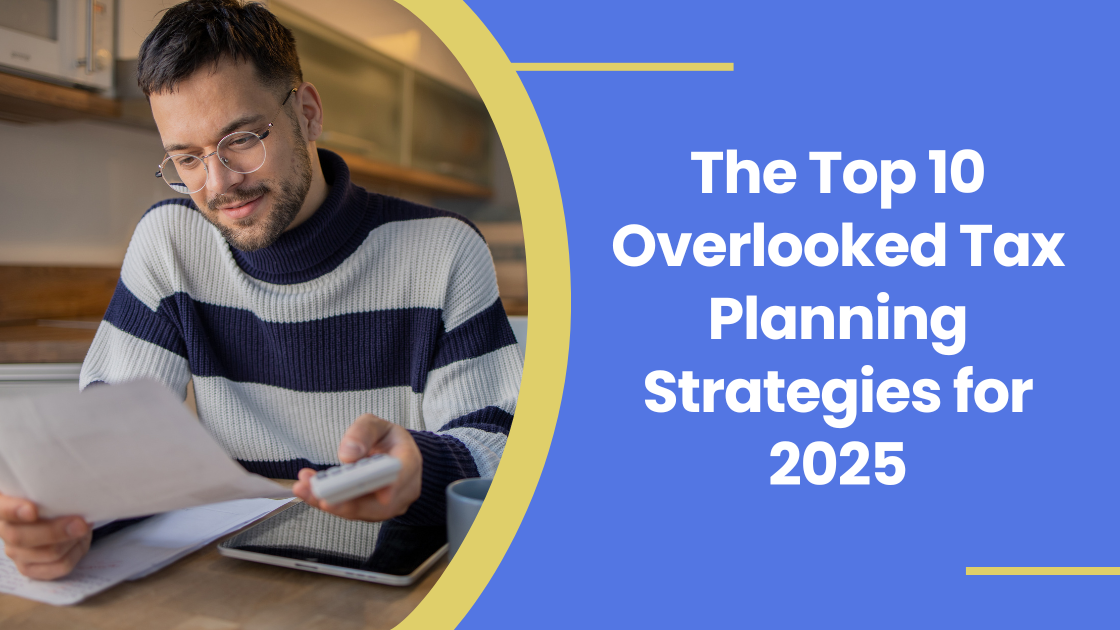- Tax Strategy
- 3 min read
The Top 10 Overlooked Tax Planning Strategies for 2025

- Share via:
- Copy link
In 2025, small accounting firms are at a crossroads. Clients expect more than just compliance—they want proactive, value-driven advice. Yet many tax professionals, especially those not trained in advanced planning, leave money on the table. The culprit? Overlooked tax strategies that are either misunderstood, underutilized, or seem too time-intensive to implement.
With AI for tax professionals and modern tax planning software, these high-impact opportunities are no longer out of reach. Here are ten overlooked tax strategies every accountant should revisit—and how the right software for accounting firms can simplify implementation.
1. Maximize the QBI Deduction with the Right Software for Accounting Firms
The Qualified Business Income (QBI) deduction under Section 199A remains widely underused. While the 20% deduction seems straightforward, nuances related to income thresholds, entity structure, and specified service trade rules often lead to missed opportunities.
Advanced tax planning strategies integrated in tax planning software can quickly analyze eligibility, compare scenarios, and reveal planning options previously buried in spreadsheets.
2. The Augusta Rule: Hidden in Plain Sight
Section 280A(g), better known as the Augusta Rule, allows homeowners to rent their homes for up to 14 days per year tax-free. Small business owners can use this rule to hold board meetings at home, turning a nondeductible event into a smart tax strategy.
It’s a powerful, low-hanging fruit that tax professionals frequently overlook—and it’s easy to model and document using AI for tax professionals.
3. Make the S-Corp Election Count
Switching from an LLC to an S-Corp can reduce self-employment taxes by dividing income between salary and distributions. Yet many firms shy away from recommending this because they fear compliance pitfalls.
With tax planning software, it’s easier to model the net tax benefit and back it up with IRS logic. It can also flag red flags, like unreasonably low salaries, that might attract scrutiny.
4. The Home Office Deduction Still Delivers
Too many tax professionals abandon the home office deduction due to outdated perceptions. The truth? With more professionals working from home, this deduction is more relevant than ever.
AI for tax professionals can calculate safe-harbor and actual expense methods, helping clients benefit while reducing audit anxiety.
5. Retirement Contributions: Still Underleveraged
From Solo 401(k)s to SEP IRAs, retirement plans offer enormous planning potential. But many firms fail to initiate this conversation early enough to maximize impact.
Using software for accounting firms, advisors can show clients exactly how much they can save now and in the future, making it easier to act rather than delay.
6. The Forgotten R&D Credit
The Research and Development (R&D) tax credit isn’t just for tech startups. Construction firms, manufacturers, and even design professionals can qualify.
AI-driven tax planning software can cross-check activities against IRS criteria and provide sample documentation to justify the credit—which can offset payroll taxes for startups and boost cash flow.
7. Employing Your Kids: A Legit Strategy
Hiring your children is often dismissed as a gimmick, yet it can shift income to lower brackets, reduce overall family tax, and instill financial responsibility.
With proper guidance from advanced tax planning strategies built into your platform, you can run payroll correctly and stay compliant with labor laws.
8. Section 179: More Than Just Equipment
Section 179 allows immediate expensing of qualifying equipment, but many firms miss deductions for off-the-shelf software, vehicles, and improvements.
Tax planning software makes it easy to run depreciation schedules, compare Section 179 to bonus depreciation, and model multi-year savings.
9. Vehicle Expense Deductions Often Fall Short
Most clients don’t track mileage accurately or choose the wrong method. This is a deduction with massive potential when properly documented.
Using AI for tax professionals, firms can pull client vehicle data from apps or GPS logs and run comparisons between actual expenses and the standard mileage rate.
10. Green Tax Credits Aren’t Just for Big Firms
Energy-efficient improvements can lead to federal credits and depreciation benefits. Yet these are often bypassed due to complex rules or lack of awareness.
Tax planning software can flag opportunities, such as 179D deductions or clean energy credits, especially relevant for high-income clients seeking additional savings.
How TaxPlanIQ Makes Overlooked Strategies Actionable
Many of these strategies go unused not because they’re obscure, but because implementing them is time-consuming without the right tools. TaxPlanIQ solves this.
It lets you upload a 1040, instantly suggests applicable strategies, and generates a branded, easy-to-understand tax plan. You also get step-by-step implementation guidance, court case references, and clear pros and cons for each option. Even if you’ve never offered tax planning before, you can start offering advanced tax planning strategies within days.
If you’re ready to stop leaving money on the table and want to build a scalable, advisory-focused firm, sign up for a free demo of TaxPlanIQ today.
Popular blogs
Interviews, tips, guides, industry best practices, and news.
Picture this… you're out on the golf course, having a blast, when suddenly you stumble upo...
Business owners and entrepreneurs are always looking for legitimate and easy ways to save ...
When you sell an investment property, the capital gains tax can put a big dent in your pro...
As the 2024 presidential election comes to an end, former President Donald Trump has unvei...
In the world of retirement savings, the Backdoor Roth IRA is a powerful strategy designed ...


.png?width=1419&height=1800&name=img2%20(1).png)
.png?width=1389&height=1800&name=img3%20(1).png)